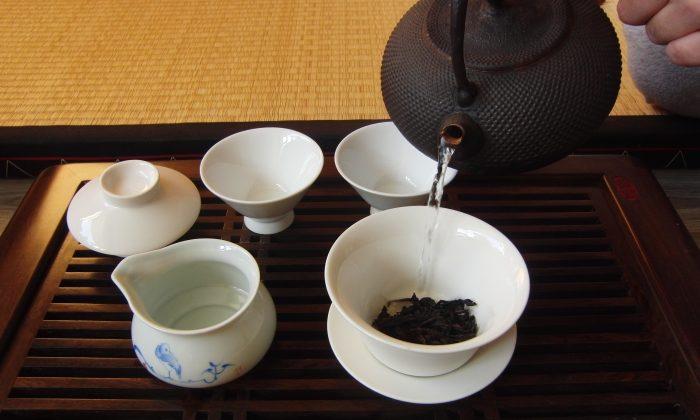“Pu-erh” tea is the classical music of tea. It has depth, complexity, purity, and a spiritual dimension. It is one of the few things that actually gets better with time, as it evolves rather than decays. Long-term stored Pu-erh can increase in value multiple times and is called a drinkable antique. And it surely tastes good.
Pu-erh tea grows in Yunnan, southern China. Everything that grows outside of Yunnan is officially not allowed to be called Pu-erh. Yunnan province has the patent on Pu-erh tea. Remember that! The tea that grows in bordering countries such as Laos, Burma, and Vietnam might come from the same breed of trees, or tea bushes. It might taste, look, feel and smell the same, and in fact may be less polluted than its counterpart across the border. Yet, do not dare to call it Pu-erh tea!
Pu-erh tea comes in many shapes and forms. The loose and unprocessed tea leaves (called “maocha”) are pressed into a wide range of shapes. Most common are the round disc shape, brick shape, and the shape of a bird’s nest (“tuocha”) but you will also find pillar shapes, mushroom shapes, and giant watermelon shapes.
Originally, young Pu-erh was left to age for a couple of years (at least five years) before it was considered drinkable. Since the 1970s there is a processed kind of Pu-erh on the market called “cooked” Pu-erh.
For cooked Pu-erh special (secret) processing method called “wodui” speeds up the fermentation and oxidation by piling wet towels onto the tea. So that you no longer have to wait 5, 10 or 20 years. The result, however, is different from naturally aged raw Pu-erh tea. The cooked version lacks vitality, pureness, and depth in my view. Unfortunately, most people first come into contact with cooked Pu-erh, which is often described as fishy and as having “a ground taste.” This might be one of the reasons why Pu-erh is not that popular or well-known yet.
I personally mostly drink young (1 to 5 years) raw Pu-erh and that is what my cupboards are filled with.
The pleasure of drinking Pu-erh tea is not confined to drinking something that tastes good, but also in observing its changes, for better or worse. Likewise, there is pleasure in holding off drinking Pu-erh, while knowing (hoping) that it is silently transforming into something good.
If you store tea at home, it is important to keep it exposed to the air but keep it away from bad or strong odors. A humid and hot environment speeds up the oxidation/fermentation process of Pu-erh that is why Taiwan and Malaysia are known as good places to store Pu-erh.
Pu-erh is said to go through aging-cycles of 5 years. Tea drinkers with a poetic inclination have likened its maturing cycle to that of people. In youth there is wildness, robustness and purity; at puberty there is confusion, undeveloped potential and complexity; when maturity is reached, the initial wildness is tamed, and potential is realized and transformed into wisdom.
That is one reason why Pu-erh tea is a great gift for a newborn child.
Buying young Pu-erh is like scouting for talent, as you need the eye (or tongue) and experience to know what a wild, young and often affordable tea will evolve into over the years.
Pu-erh, like classical music, is more of an acquired taste. And not as easily accessible as, say, green or white tea. But in the end, it’s much more rewarding.
The Unfathomable Pu-erh

By Peter Valk
6/29/2014
Updated: 4/23/2016

